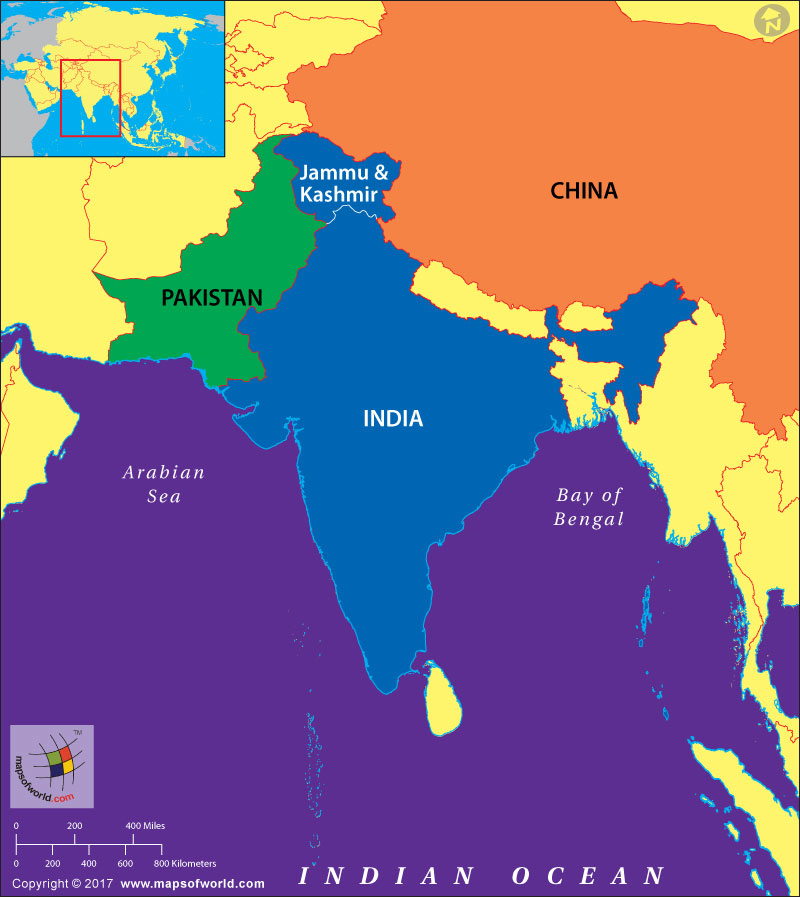Is Kashmir Part of Pakistan?

No. The entire Union Territory of Jammu and Kashmir (J&K) and the entire Union Territory of Ladakh are an integral part of India.
As per Instrument of Accession of Jammu and Kashmir State signed between Maharaja Hari Singh, the then Ruler of Jammu and Kashmir State (which comprised Ladakh), and the Indian Union, on 26 October 1947, the entire state of Jammu and Kashmir acceded to merge with the Indian Union. This agreement was final and beyond dispute and remains valid till date.
The events that followed this accession led to a part of the state of J&K being occupied by Pakistan and that part is referred to as Pakistan Occupied Kashmir. The majority of the former state of J&K remains a part of the Indian Union. J&K is made up of three regions – Jammu, Ladakh and Kashmir. Jammu and Ladakh regions together represent the majority landmass and remain peaceful and without any unrest. It is only Kashmir valley, which forms a small part of J&K, that is facing unrest. The side occupied by Pakistan is also facing unrest.
The origins of dispute with Pakistan
India became an independent nation from the midnight of 15 August 1947 and Pakistan won its freedom just a day earlier. The formation of Pakistan came against the backdrop of brutal violence, that saw substantial loss of lives within the Sikh, Hindu and Muslim communities living on both sides of the Radcliffe line. The line was proposed by the Sir Cyril Radcliffe as the demarcating international border between Pakistan and India, on both eastern and western side of India.
As India pushed to convince around 565 princely states to join the Indian Union, Pakistan began pressurizing Maharaja Hari Singh to join Pakistan. Till late September 1947, Maharaja Hari Singh, being a Hindu ruler of a predominantly Muslim majority state, remained undecided.
In early October of 1947, Pakistani armed forces encouraged and supported Pashtun tribesmen from North Western part of Pakistan, known as Razzakars, to move into Srinagar, the capital of the state of Jammu and Kashmir. What followed was a savage assault on local people and included arson, rape, plunder and killings.
In desperation, Maharaja Hari Singh turned to India for immediate assistance. The Indian government, led by Prime Minister Jawaharlal Nehru, and supported by the then British Governor General Lord Mountbatten, insisted that Maharaja Hari Singh sign the Instrument of Accession in favor of joining India. He did this on 26 October 1947 and the same day, Indian Army troops landed in Srinagar to free the city of the Pakistani marauders.
They were soon pushed back but not far enough. The demarcation of positions held ever since has come to be known as the Line of Control (LOC). LOC is not a recognized international border, but represents the differentiating point of territory held by the respective sides.
Pakistan has never recognized the Instrument of Accession to India signed by Maharaja Hari Singh and this has been the genesis of the dispute that remains the primary cause of deep hostility between the two nations.
International opinion, including those expressed by UK, is mostly in favor of India’s position and has called Pakistan’s occupation of Kashmir illegal. It remains an unresolved and hotly contested issue between both countries.
Related Maps:


